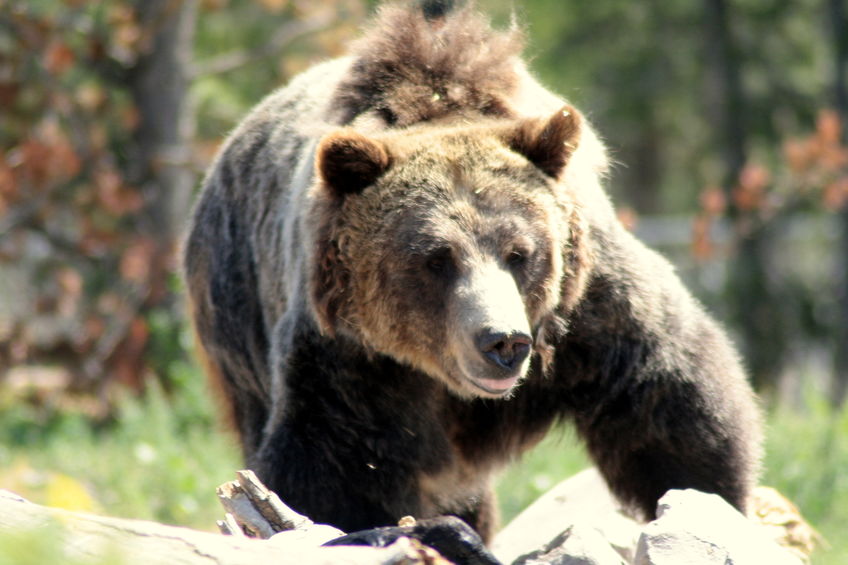The growing number of grizzly bears in the West has sharpened conflicts between cattle ranchers, intent on protecting their livestock and livelihoods, and environmental organizations, seeking rigorous enforcement of the Endangered Species Act (ESA).
In the latest legal skirmish between ranchers and greens, of which more are certain to follow, the U.S. District Court for the District of Columbia on June 19 denied a motion by three environmental groups to enjoin the killing of grizzly bears. Western Watersheds Project, the Alliance for the Wild Rockies, and the Yellowstone to Unitas Connection had argued that a 2019 Biological Opinion and Incidental Take Statement by the U.S. Fish & Wildlife Service (FWS) that allowed the killing of up to 72 grizzlies over the next decade in Wyoming’s Bridger-Teton National Forest violated the ESA by not using the best available scientific data and failing to set a cap on the killing of females.
Unexplained Delays in Filing their Lawsuit
The court pointed out that the environmental groups had waited more than three months after the release of the biological opinion to file a notice of intent to file a lawsuit, and then waited another five months before filing a motion for temporary injunction. These unexplained delays undermined their claims that the bears would be irreparably harmed without an injunction, Judge Amit P. Mehta said in his opinion.
Doubts were also cast by the court over the groups’ claims that female grizzlies were at particular risk. Citing data in the biological opinion, the court noted that no female bears were taken in 2019, only one was taken in 2018, and none were taken in 2017. Judge Mehta chided the groups for failing to demonstrate how female bears would be harmed without the injunction.
In fact, most deprecating grizzlies are young adult males that develop a taste for livestock and act accordingly. Though the number of such bears is small, their attacks on livestock can cost ranchers dearly.
The Comeback of the Grizzly
According to FWS data, the number of grizzlies in the Greater Yellowstone area rose from 136 in 1975 to more than 700 in 2019. Some 1,700 grizzlies roam the Lower 48, while another 32,000 make their home in Alaska, where they are not protected. Another 21,000 reside in Canada.
Grizzly bears are at the center of another legal dispute in western Wyoming pitting ranchers against environmentalists. The Green River Drift is one of the nation’s oldest cattle drives, dating to 1896. Covering 58 miles, the annual trek involves cowboys on horseback driving cattle from the high-desert mesas to the Bridger-Teton National Forest. Grizzlies have become accustomed to the annual trek, and some of them lie in wait hoping to dine on an unsuspecting calf or cow. The drive passes over federal, state, and private land.
Last October, the U.S. Forest Service, recognizing the threat rogue bears pose to cattle, issued permits allowing for the removal of up do 72 bears over ten years. The Forest Service’s permits are grounded in the same FWS biological opinion that was center stage in the D.C. District Court’s rejection of the environmental groups’ motion for an injunction. In a separate suit, Western Watersheds Project is joined by the Center for Biological Diversity and the Sierra Club in challenging the 72-bear killing limit.
“The meat of our injunction [request] is to prevent the killing of grizzly bears on these six general grazing allotments on public lands,” Erik Molvar, executive director of Western Watersheds Project, told the Washington Times (June 12). “The livestock industry is kicking and screaming and saying that it can’t possibly run cattle in this area without reprisal killings of grizzly bears, which frankly doesn’t resonate with us.”
Taking the side of the ranchers is the Denver-based Mountain States Legal Foundation (MSLF), which described the suit as an “attempt to destroy the oldest continually used stock drive in the West – the Upper Green River Drift – and the historic ranches that depend upon it.”
“Sending their Cattle to Certain Death”
Noting that some Upper Green Valley ranchers have reported losses of up to 14% in recent years from grizzlies and wolves, MSLF’s Brian Gregg told the Times that the preliminary injunction sought by the three environmental groups wouldn’t prevent ranchers from grazing their cattle on the drive, “but it would prevent them from killing grizzly bears that attack their herds. They would be knowingly sending their cattle to certain death in some cases.”
With the D.C. Circuit Court’s slap down of the lawsuit against the FWS, the environmentalists’ case against the Forest Service over the Green River Drift could become moot. In any event, the cultural/political gap that separates the ranchers and the greens appears unbridgeable. The Western Watersheds Project’s Molvar refers to the ranchers as “the livestock industry” rather than what they really are: small family-owned businesses coping with everything from wildfires, hungry predators, fickle weather, COVID-19 to the constant threat of lawsuits from well-funded environmental groups.
